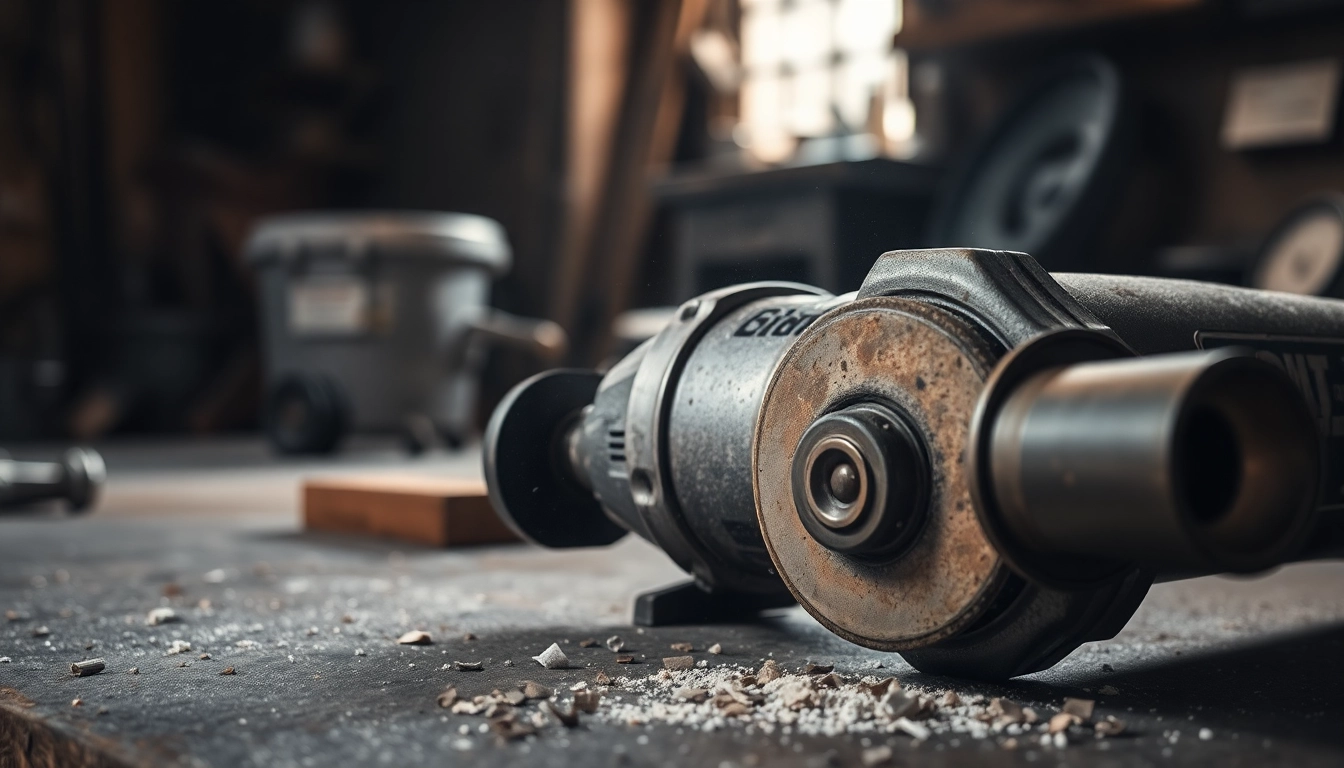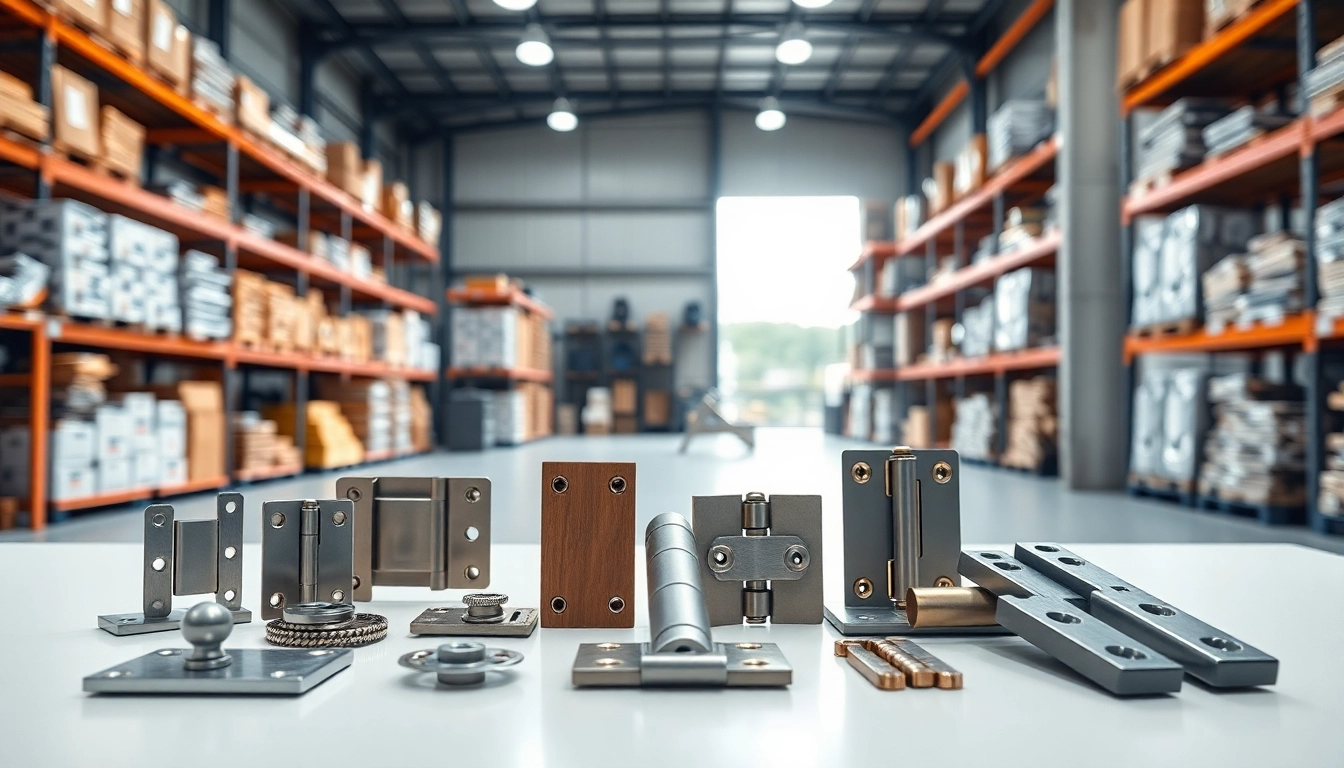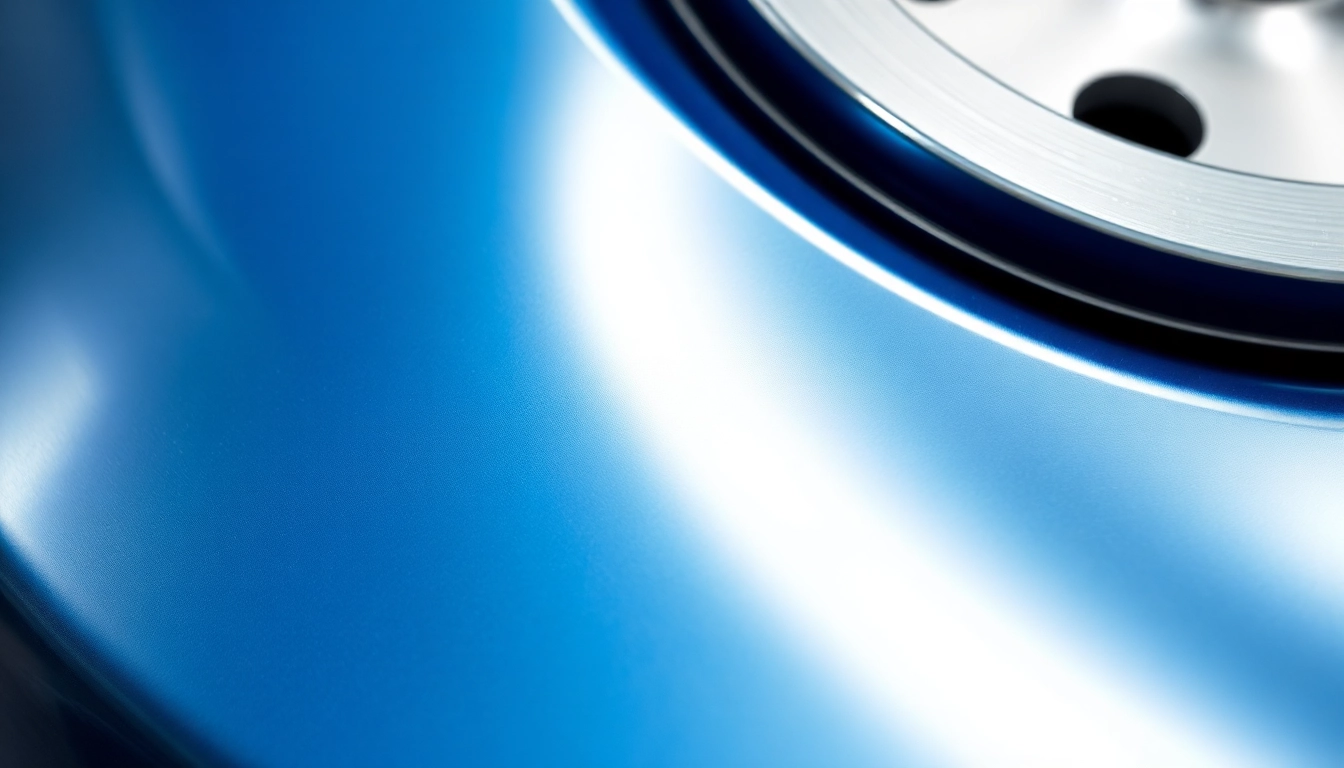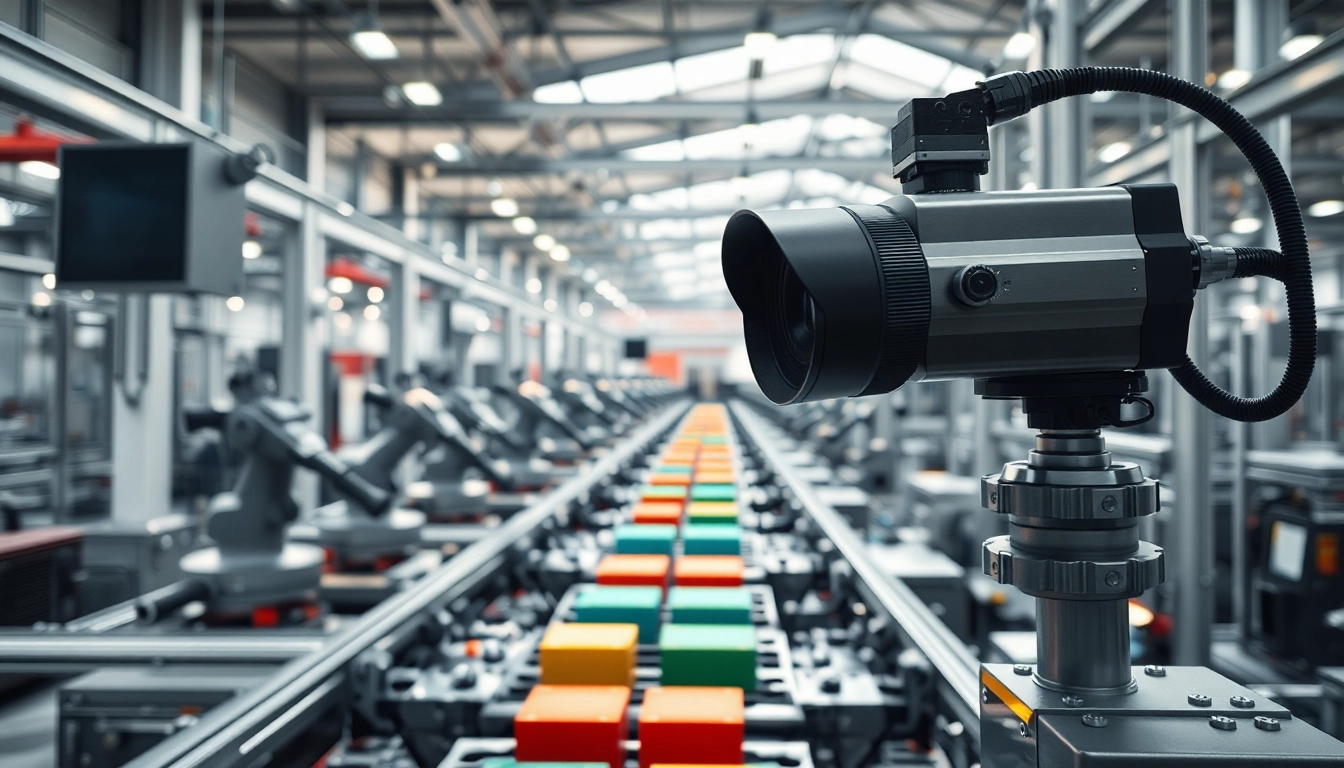Understanding Angle Grinders
What Are Angle Grinders?
Angle grinders are versatile handheld power tools designed primarily for grinding, cutting, and polishing a variety of materials, including metal, tile, and masonry. These tools utilize a rotating disc, or wheel, to perform abrasive cutting tasks with efficiency and precision. The term “angle” refers to the positioning of the motor in relation to the grinding disc, which is typically set at a right angle. This design allows for easier access to varied surfaces, particularly in tight spaces.
Commonly used in construction, metal fabrication, and repair work, an angle grinder can serve multiple functions depending on the attachment, making it a crucial tool in professionals’ and DIY enthusiasts’ arsenals.
Types of Angle Grinders
Angle grinders come in several variations based mainly on their power sources:
- Corded Angle Grinders: These grinders are powered by electricity and are ideal for prolonged use since they don’t run out of battery. They typically offer more consistent power and performance than their cordless counterparts.
- Cordless Angle Grinders: These battery-operated tools provide unparalleled portability and freedom of movement on job sites, making them common for tasks that require mobility. However, battery life can be a limiting factor, especially in demanding situations.
- Pneumatic Angle Grinders: Powered by compressed air, these grinders are often used in industrial settings where air compressors are available. They are known for their lightweight and high power-to-weight ratio, making them suitable for extended operations.
How Angle Grinders Work
The core functionality of an angle grinder revolves around its rotating disc, which can be exchanged based on the intended task. Here’s a basic overview of how angle grinders operate:
- The motor rotates the spindle, which is attached to the grinding wheel.
- As the wheel spins, it grinds or cuts through the material by abrasive action.
- The operator controls the grinder movement, guiding it along the material for a clean finish.
- Users can change out discs to adapt the grinder for different projects—be it cutting metal, polishing concrete, or sanding wood.
Choosing the Right Angle Grinder for Your Needs
Key Features to Look For
When selecting an angle grinder, consider the following features:
- Power Rating: Measured in amps or watts, power ratings typically range from 4 to over 15 amps. Higher power ratings generally translate to better performance for tougher materials.
- Wheel Size: Most grinders have wheel sizes between 4.5 inches and 9 inches. Larger wheels can cut through thicker materials but may be less maneuverable.
- Speed: The rotational speed, expressed in RPM, is crucial for effective cutting and grinding. Grinders can range from 2,500 to 12,000 RPM, with higher speeds providing quicker results.
- Weight and Comfort: Lighter models are easier to handle for extended periods. Look for ergonomically designed handles and grips for better control.
- Safety Features: Features such as protective guards, automatic shutoff, and anti-restart technology enhance user safety during operation.
Comparing Corded vs. Cordless Angle Grinders
When deciding between corded and cordless angle grinders, consider the following aspects:
- Power: Corded grinders usually deliver more power and are best suited for heavy-duty tasks. Cordless grinders, however, offer flexibility and convenience, especially in remote locations.
- Portability: Cordless models easily move from one location to another without the hassle of cords, making them preferable for many DIY projects.
- Battery Life: Cordless grinders require charged batteries, which can limit usage time. Opting for models that come with an extra battery can alleviate this issue during extensive jobs.
Common Brands and Their Offerings
Numerous brands manufacture angle grinders, all offering a spectrum of models. Here are prominent players in the market:
- Dewalt: Known for rugged reliability, Dewalt’s angle grinders deliver robust performance ideal for professional environments.
- Makita: Renowned for cutting-edge technology, Makita models provide features like throttle control and enhanced durability.
- Bosch: Bosch’s angle grinders are celebrated for their innovative designs and safety features, incorporating advanced engineering in their tools.
- Milwaukee: Milwaukee angle grinders provide high-torque performance and are favored for heavy-duty tasks, especially in commercial settings.
Angle Grinder Applications
Versatile Usage Scenarios
Angle grinders are incredibly multifunctional tools with applications across various fields:
- Metalworking: Cutting metal pipes, shaping metal sheets, and even polishing can all be accomplished with the right disc.
- Construction: These tools are utilized for cutting tiles, rebar, and masonry blocks, vital for both renovations and new builds.
- Woodworking: While not typical for woodworking, fitted with specialized discs, angle grinders can be used for sanding and smoothing wooden surfaces.
- Automotive Repairs: They are essential in automotive shops for cutting parts and polishing finishes.
Tips for Cutting and Grinding
To maximize the effectiveness and longevity of your angle grinder, here are practical tips:
- Choose the Right Wheel: Always match the disc to the material you are working on. Using an inappropriate disc can damage both the tool and the material.
- Maintain Stability: Ensure that your workpiece is clamped tightly. This prevents movement and enhances user safety.
- Use a Steady Hand: Maintain control over the grinder and apply even pressure for consistent results.
- Monitor Your Tool: Regular checks on the tool to ensure no wear on gears and electrical components can prevent accidents.
Enhancing Safety While Using Angle Grinders
Safety should always be the primary concern when operating an angle grinder. Here are key safety measures:
- Wear Protection: Always use safety goggles, gloves, and ear protection to guard against debris and noise.
- Check for Damage: Inspect the grinder and its accessories for wear or damage before each use to prevent malfunctions.
- Understand the Tool: Familiarize yourself with the grinder’s controls and features before operating it.
- Work in a Safe Environment: Ensure your work area is clean and free from flammable materials.
Maintenance and Care
Routine Maintenance Tips for Longevity
Taking care of your angle grinder will extend its life and performance:
- Cleanliness: Regularly clean the tool after use to remove dust and debris. This can prevent internal damage and overheating.
- Lubrication: If your grinder has gears, lubricate them as per the manufacturer’s instructions to keep mechanisms running smoothly.
- Storage: Store the grinder in a dry place away from moisture, which can cause rust and corrosion.
Identifying Wear and Tear
Recognizing when your angle grinder needs repair or replacement is vital. Common signs include:
- Overheating during use.
- Unusual noises, grinding or rattling sounds.
- Excessive vibration when in operation.
- Frequent tripping of the circuit breaker when plugged in.
Replacing and Choosing Accessories
Choosing the right accessories for your angle grinder is key for optimal performance. Common accessories include:
- Grinding Discs: Ideal for removing excess material or shaping surfaces.
- Cutting Discs: Used for slicing through metal, concrete or masonry.
- Sanding Wheels: Great for smoothing surfaces, particularly in woodworking.
Always adhere to the recommended specifications for disc size and type to ensure safe operation.
Frequently Asked Questions
Common Issues with Angle Grinders
While angle grinders are generally robust tools, users may sometimes encounter common issues:
- Tool Doesn’t Start: This could be due to a tripped circuit or a faulty switch; check power sources and connections.
- Discs Wearing Out Quickly: Ensure you’re using the correct type of disc for your project and maintaining appropriate pressure while working.
Best Practices for Operator Safety
To ensure the safety of the operator and those nearby, always follow these best practices:
- Never bypass safety guards.
- Always disconnect the power source when changing accessories.
- Never operate a grinder without appropriate personal protective equipment (PPE).
Choosing the Right Disc for Each Task
Selecting the right disc for your angle grinder is critical for the success of the task. Consider the following:
- Material: Use specific discs designed for the material you are working with; for instance, diamond blades for tile cutting.
- Task: Choose thinner discs for cutting and thicker ones for grinding.



